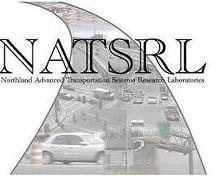

A Nonlinear
State Space Approach to Arterial Travel Time Prediction
(Research funded by the Minnesota Department of Transportation,
Mn/DOT)
Department
of Electrical and Computer Engineering
University of Minnesota Duluth
Principle Investigator:
Dr. Jiann-Shiou Yang
Research Assistants: Archna Yadav, Feng Qian
Travel time information is a good operational measure of the effectiveness of transportation systems and can be used to detect incidents and quantify congestion. Travel time prediction refers to predicting and calculating travel time before a vehicle has traversed the arterial/freeway or route of interest. The ability to accurately predict freeway and arterial travel times in transportation networks is a critical component for many ITS applications (e.g., advanced traffic management systems, in-vehicle route guidance systems).
This project will
focus on arterial travel time prediction by developing a recursive, nonlinear-state
space model to predict short-term travel time on arterials. Prediction of travel
time is potentially more challenging for arterials than for freeways because
vehicles traveling on arterials are not only subject to queuing delay but also
to traffic signal delay. Kalman filtering/time series analysis techniques will
be incorporated with the prediction model due to their ability to update travel
time information continuously to reflect the traffic fluctuation in real time.
Unlike many off-line algorithms that use only historical data for prediction,
both real-time and historical data will be used in the process of travel time
prediction. Real-time data will be collected using the Global Positioning Systems
(GPS) probe vehicle technique. In addition, information on traffic conditions
on upstream and downstream links via video detectors will be used to improve
the quality and robustness of the data.
The model will be implemented and field-tested on Minnesota State Highway 194
between Mesaba Avenue and Haines Road, one of the most heavily traveled and
congested roadways in the Duluth area. The result is expected to provide a valuable
tool for monitoring and gauging the traffic system performance and service quality
of the arterials in the area of interest.